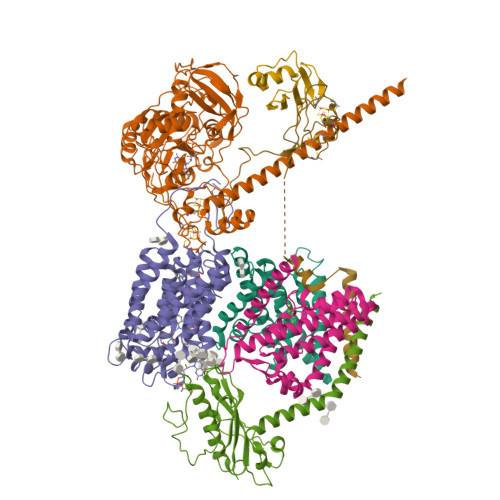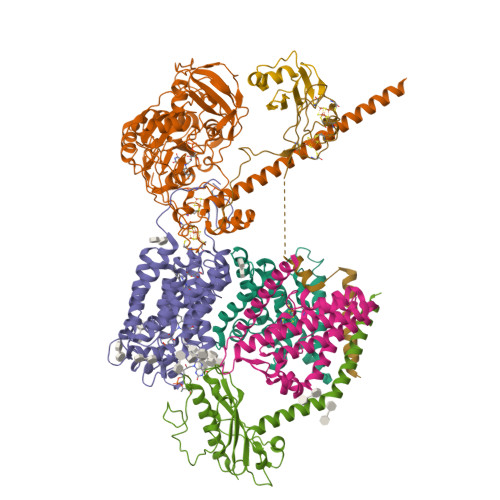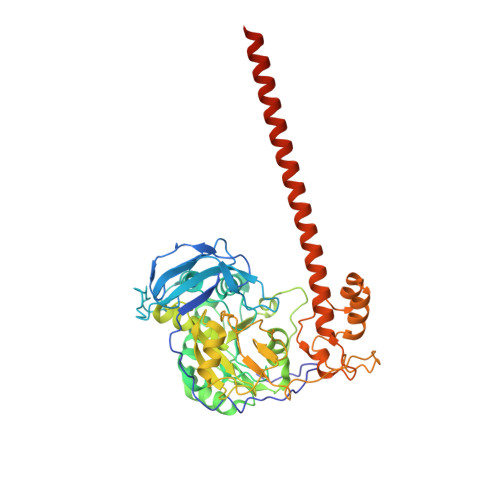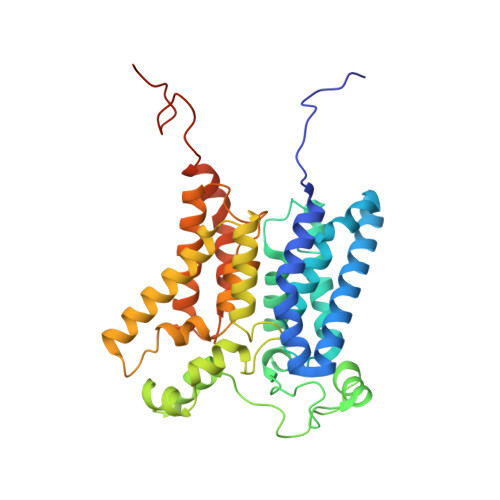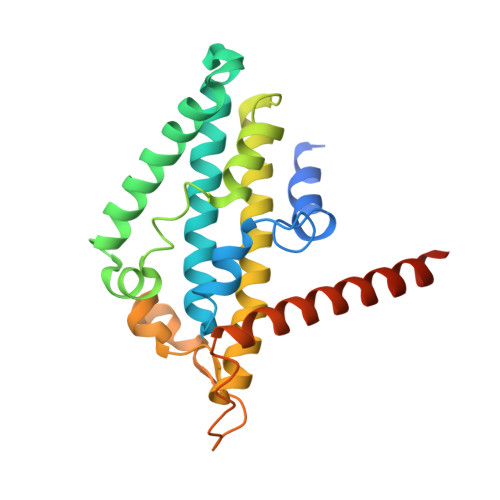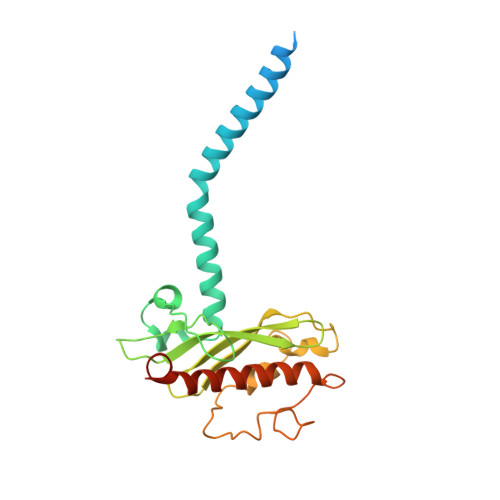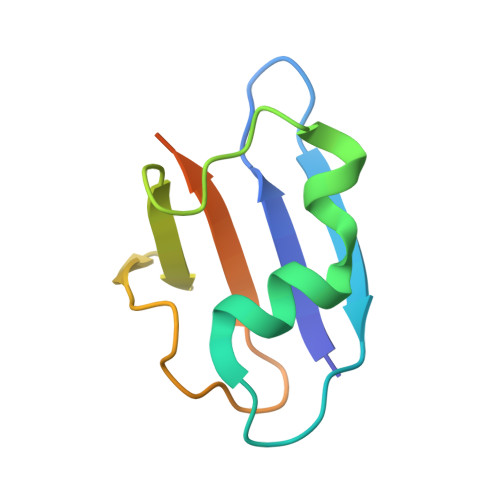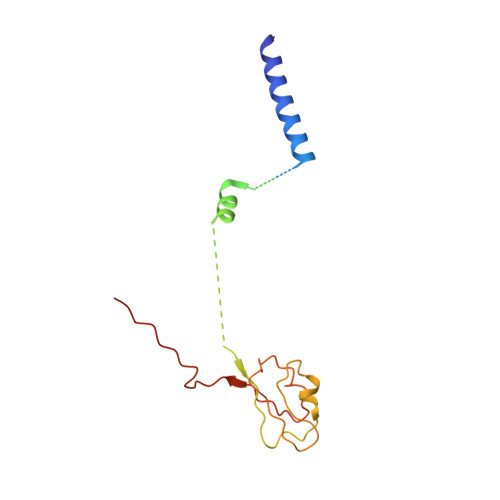Architecture of the RNF1 complex that drives biological nitrogen fixation.
Zhang, L., Einsle, O.(2024) Nat Chem Biol 20: 1078-1085
- PubMed: 38890433
- DOI: https://doi.org/10.1038/s41589-024-01641-1
- Primary Citation of Related Structures:
8AHX, 8RB8, 8RB9, 8RBM, 8RBQ - PubMed Abstract:
Biological nitrogen fixation requires substantial metabolic energy in form of ATP as well as low-potential electrons that must derive from central metabolism. During aerobic growth, the free-living soil diazotroph Azotobacter vinelandii transfers electrons from the key metabolite NADH to the low-potential ferredoxin FdxA that serves as a direct electron donor to the dinitrogenase reductases. This process is mediated by the RNF complex that exploits the proton motive force over the cytoplasmic membrane to lower the midpoint potential of the transferred electron. Here we report the cryogenic electron microscopy structure of the nitrogenase-associated RNF complex of A. vinelandii, a seven-subunit membrane protein assembly that contains four flavin cofactors and six iron-sulfur centers. Its function requires the strict coupling of electron and proton transfer but also involves major conformational changes within the assembly that can be traced with a combination of electron microscopy and modeling.
Organizational Affiliation:
Institut für Biochemie, Albert-Ludwigs-Universität Freiburg, Freiburg, Germany.








